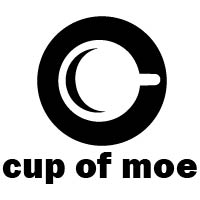We may earn money or products from the companies mentioned in this post.
2013 may be the year of the sequel. For not only have countless film franchises grown, but several follow-ups have surpassed their predecessors. Count “The Hobbit: The Desolation of Smaug” among that elite, yet expanding, class of movies. While the inaugural adaptation of J.R.R. Tolkien’s epic Hobbit novel was indeed brilliantly brought to life through Peter Jackson’s visionary filmmaking, “The Desolation of Smaug” benefits from quicker pacing, well-established characters, and an ever-expansive Tolkien universe which make for an increasingly enjoyable experience.
“The Hobbit: The Desolation of Smaug” begins in a pub with protagonist Thorin Oaksnshield (Richard Armitage) and Gandalf the Grey (Ian McKellen). The brief flashback introduces the continuing mission of Oakenshield and company, to reclaim their Dwarven homeland, the Lonely Mountain, from treacherous dragon Smaug (Benedict Cumberbatch). Action then skips ahead a year to present day where audiences are reunited with the familiar Dwarf pack, accompanied by Gandalf and Hobbit Bilbo Baggins (Martin Freeman). Picking up where 2012’s “The Hobbit: An Unexpected Journey” left off, the travelers are pursued by a sinister orc pack led by familiar sneering Azog the Defiler (Manu Bennett). Luckily, unlike the original flick, there’s no lengthy, albeit necessary, setup. Instead, Jackson plunges into the action. While the comedic introductions and Dwarf songs present in the first “The Unexpected Journey” were amusing, they bogged down the pace.
Assuming viewer familiarity with the initial film of the trilogy allows for less explanation and more action. This holds true for character development as well. While Jackson spent a substantial part of the prior movie showing the Dwarves and Bilbo working through kinks and establishing individual roles, “The Desolation of Smaug” bounds into the first of many obstacles. Fans of Tolkien’s The Hobbit, as well as the Fellowship of the Rings trilogy will recall moments such as the Mirkwood spiders and the clever barrel rafting excursion which offer not only gripping visuals but also entertaining team dynamics.
Jackson’s sprawling vision ushers The Hobbit off the page into a lush, vivid on-screen life. He accomplishes this through concrete settings which spring to life, as well as a multi-talented roster. The misty, ice-coated waters of Lake-town pop into reality, as do the gargantuan columns and winding stairwells within the Lonely Mountain. Acting is universally superb. Richard Armitage, Martin Freeman, and Ian McKellen reprise their lead roles and deliver excellent performances. Legolas (Orlando Bloom) joins the cast in yet another attempt from director Jackson to further unite the many tentacles of the Lord of the Rings universe. Even seasoned veterans appear in relatively minor roles, such as Stephen Fry’s hilarious Master of Lake-town portrayal. Benedict Cumberbatch provides an awe-inspiring Smaug. Only through Cumberbatch’s sly, biting narration can a dragon’s personality become more threatening than its talons and fire. Smaug toys with Bilbo, and similarly prefers playing with his foes and preying upon their fears and anxiety rather than devouring them straight away.
Despite the strengths of Peter Jackson’s blockbuster film, like the seemingly impenetrable Smaug, the movie comes with a few weaknesses. While Jackson seeks to interconnect the Lord of the Rings franchise, he includes numerous scenes that appear nowhere in Tolkien’s The Hobbit. This means cutting some scenes and shortening others. Considering that Jackson split the shortest of the four novels into three parts though feels ironic, especially with the added material. Notably, he introduces Tauriel (Evangeline Lilly), an elf who acts as a love interest for Legolas as well as Dwarf Kili (Aidan Turner). Unlike most of Jackson’s alterations, she isn’t drawn from the Tolkien world. Tauriel infuses the film with rapid and frankly awesome fighting, but her character detracts from the overall story arc.
Additionally, some scenes drag on too long, such as the barrel riding expedition. Sure, it’s engaging and the topsy-turvy cinematography lurches viewers into the action, this action-packed sequence lacks the strong dialogue so prevalent throughout the remainder of the film. While “The Hobbit: The Desolation of Smaug” isn’t a flawless continuation of the classic novel, it’s certainly an enthralling thrill ride, and the few complaints are largely nitpicks. As one of the best movies to come out in 2013, this is assuredly a big-screen experience, what with the life-like set, stellar acting, and quick pace. The true annoyance is the year-long wait for the conclusion to the so-far riveting trilogy.
This post may contain affiliate links. We are a participant in affiliate programs such as the Amazon Services LLC Associates Program, an affiliate advertising program designed to provide a means for us to earn fees by linking to Amazon.com and affiliated sites. However, all products are thoroughly tested and reviews are honest and unbiased.

